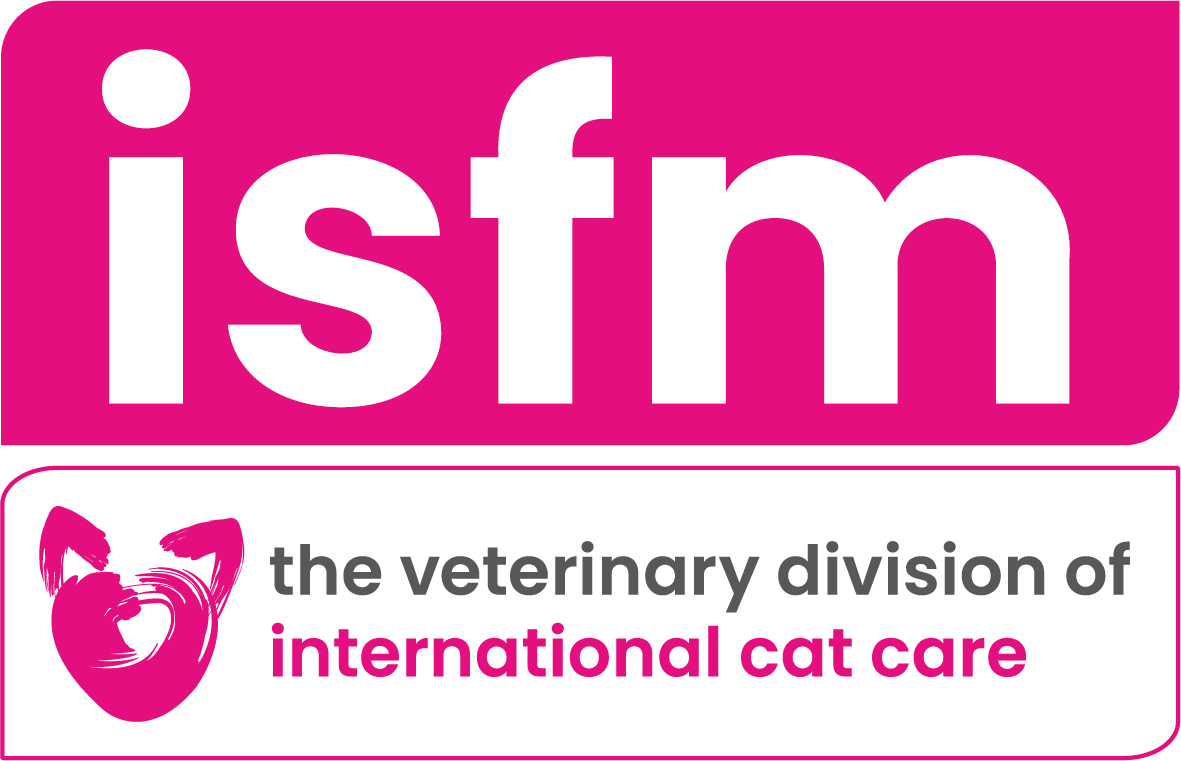
Teach Any Cat AeroKat* - 5: Inhaling the Medication
This video on teaching your cat to be comfortable with Inhaling the Medication through the AeroKat* chamber is part of our Teach Any Cat AeroKat* video series.
This training series was created with two leading cat behavior experts from International Cat Care; a Certificated Clinical Animal Behaviorist and trainer; and Head of Cat Advocacy and author of the best-selling book “The Trainable Cat”.
Teach Any Cat AeroKat* Full Series
Developed in partnership with the International Society of Feline Medicine (ISFM), the veterinary division of parent charity International Cat Care.
Reviewing the Training of the AeroKat* Chamber
If you have worked through the steps 1-4 in our AeroKat* chamber training video series, your cat will now be comfortable with:
- • all of the sights, scents and sounds associated with the chamber
- • voluntarily placing their nose into the mask and holding it there, while breathing for a required number of breaths.
Now that we have the building blocks in place, we can “stack them together” to introduce medication and teach comfort with “real life” inhaled treatment.
Applying Your Training to Administer Cat Inhaler Medication
- To begin, shake the inhaler, then feed your cat.
- Insert the inhaler into the back of the chamber, then feed.
- Depress the inhaler, away from the cat, then feed.
- Over many repetitions, gradually pair the inhaler/hiss sound moving closer to your cat with rewards.
- Offer the mask for the nose to be placed into, mark nose-in-mask, then feed out of the mask.
Initially, feeding after each of these actions will help cement positive associations. At all times, observe your cat for comfort.
Then, run these preparatory steps together, so feeding only occurs after click for nose-in-mask, once the inhaler has been shaken, inserted into the chamber and offered to the cat.
Putting everything together as a sequence will be new for your cat, therefore be prepared to accept less duration or pressure of nose-in-mask. Simply reward brief approaches of the nose to the mask at first.
Wiping Your Cat's Face After Treatment
Also, your cat will need to have their face wiped after each treatment, to remove any medication on the surface of their fur. Add this additional training step, using the techniques learned for building duration and pressure in our Step 4 training video, to teach comfort for this. Use a soft, warm cloth. Starting with it dry, touch your cat on easy body parts, slowly working towards and away from the face. Reward calm during every rub with a click, each followed with food. When this is easy for your cat, slightly dampen the cloth, and work in stages towards comfort around its face.
With Confidence, You can Increase Duration
As your cat gains confidence and comfort with more realistic treatment sequences, you can re-add duration (as demonstrated in our Step 4 training video).
When your cat places their nose in the mask, support the weight of the chamber, and gently maintain pressure against their face. At no time should you force the mask towards their face, or apply more pressure than they are using themselves. Let your cat take the lead.
Gradually, you can start piecing together full, short treatment sequences, slowly adding more duration.
Build your cat towards more breaths through the AeroKat*
Slowly, shape towards more breaths, whilst practicing realistic treatment sequences: shaking the inhaler, placing it in the back of the chamber, presenting to it to your cat to approach. Here we have built up to 4 breaths – which is potentially half the cat’s treatment! During the training phase, and as your cat is learning comfort with the AeroKat*, it is possible to divide the treatment into two sections – the first with 3 to 5 breaths, taking a short 15 to 30 second break, then repeating the second half of the treatment of a further 3 to 5 breaths (as prescribed). Note, these need to be done in relatively quick succession to ensure treatment success.
Soon your cat will be ready for their full treatment sequence, for the 7 to 10 breaths required for treatment (as prescribed by your veterinarian). Always remember to watch the Flow-Vu* indicator to count your cat’s breaths. At all times your cat should choose to take part, without restraint or force, and is relaxed while breathing in their inhaled medication.
Building the steps slowly and at your cat’s pace will ensure long-term treatment success.
Congratulations!
When you and your cat have reached this point, it is a great achievement.
You have worked through the steps, learning together, in a positive and cat-friendly way, how to effectively and humanely treat your cat with inhaled therapy using the Aerokat* chamber - well done!
Remember to keep practicing, keep rewarding your cat for every success, and keep everything positive, with your cat always in control.


